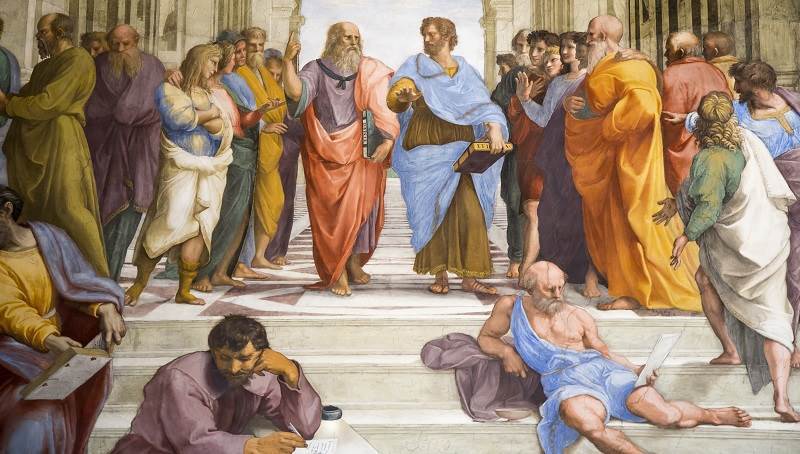
For most of us, the holiday season is highlighted by traditions that are repeated each year. It could be decorating in a certain way, gathering with family, making a special meal, or even watching a particular holiday movie.
One tradition in the Schmidt family is visiting the Minneapolis Institute of Arts (MIA) sometime around New Year’s Day. While we could go any time of the year, we all have some time off around the first of January, so it seems to be a good time to visit. In addition, the MIA always has a top-notch travelling exhibit featured in the last quarter of each year.
This year was no different, as the MIA featured Botticelli and Renaissance Florence: Masterworks from the Uffizi. This exhibition did not disappoint as most of the featured works rarely make it out of Italy.
I took a little while longer that I usually would with one of these exhibitions and read nearly all the informational signs and descriptions of the works. My extensive lingering saw my sons looking for the suits of armor and my daughters seeking the impressionist paintings elsewhere in the museum.
But I’m glad I took the time. As I learned more about the Italian Renaissance, two lessons I believe apply to modern information technology became clear.
Lesson One – Applying new technologies to older models can yield something surprising and innovative.
During the late 15th and early 16th centuries, painters in Rome and Florence were fascinated by the precise representation of the human figures in ancient sculptures. At that time many examples were being excavated from the ruins of the Roman empire that gave the artists models for their ideal human forms.
Who were these artists? A few names you might recognize are Leonardo da Vinci, Michelangelo, Raphael, Perugino, Botticelli, and Titian. These cultural giants adapted and modernized the proportion, symmetry, and mathematical precision of ancient artifacts for Renaissance sensibilities. They respected the past and looked boldly to the future.
So, what lessons from the past are applicable to information technology today? Here’s one that might surprise many: The “cloud” is not a place; it is a framework and method, and it can exist in your very own old-school datacenter.
Sure, there are public clouds out there that are not in your house. But the cloud experience can be brought “home” by adapting and modernizing on-premises hardware with current consumption models to pay for only the resources you consume.
All major industry standard platforms are offering this consumption model with onsite equipment. For example, Dell offers a program called APEX, HPE has Greenlake, and Lenovo’s is called TruScale. Perhaps one of these offerings could give your datacenter its own renaissance.
Lesson Two – Changing a small part of a process can widely expand your capabilities.
Painters use pigments to lay colors down on a substrate and these pigments must be bound by something that will hold the color together and allow it to be spread.
Egg whites were a binder far back as the first century BC and were the most popular method until the Renaissance. This type of paint, called tempera, could produce vivid colors, but dried very quickly, a characteristic that limited the amount of detail in a work and generally restricted paintings to modest sizes.
Then, in the early 1500’s, the growing use of linseed oil as a binder changed the European painter’s world forever. Oil-based paints were not new, but they were also not favored by Renaissance artists until their advantages were obvious.
Oil paints dried slowly and allowed artists to add details not possible with tempera. In addition, the long drying cycle allowed changes to be made and errors corrected. These were obvious advantages when working with complex subjects or large formats.
So, did the Renaissance painters abandon egg tempera entirely? Absolutely not. They often combined it with oil-based paints to suit certain purposes. It wasn’t an either/or situation. It became both tempera and oil and that is a lesson we can take to modern IT.
Ripping and replacing is not always the answer. Perhaps the modification of a current hardware or software asset, or updated process would yield better results. Before drastic measures are taken, some questions are worth asking.
For example, if a storage array is not performing to expectations, is there a configuration error or missing feature module that would solve the issue? Was the array sized properly? Is there a lack of training that would allow proper tuning? Or does the problem lie elsewhere in the network or interface to a server?
As we begin 2023 and new projects are on the horizon, let the subject matter experts at LRS IT Solutions apply these two lessons and give you some innovative ideas. Contact us and find out how we can help from analytics to security and everything in between.
After all, everyone could use a fresh perspective sometimes.
Patrick Schmidt is a Technology Lifecycle Management Specialist with LRS IT Solutions. For more than 24 years, he has been helping customers get a firm grasp on their asset and contract management with a combination of comprehensive service level analysis and lifecycle management best practices.